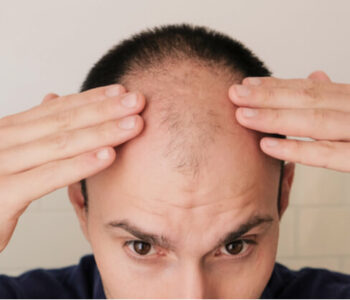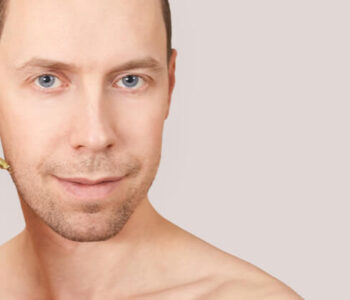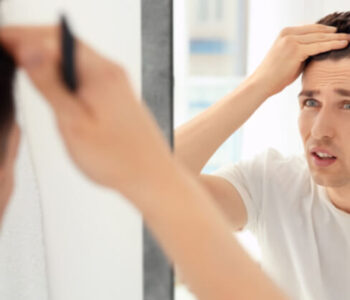In 30 seconds…
What are the options for hair loss treatment for men? There are many. From radical interventions like hair transplant surgery to the shampoos that stimulate hair growth, you’ll find one that suits your needs – and budget.
The safest and most reliably effective options are the medical treatments: Finasteride and Minoxidil. Finasteride tackles the hormone that causes male pattern baldness in the first place. That’s known as dihydrotestosterone, or DHT. Minoxidil, meanwhile, promotes the health of your hair follicles, by encouraging blood flow, oxygen, and nutrients to the area.
They can be used separately. However, a hair loss treatment plan that combines the two should be effective in over 95% of men. It’s easy – and it saves the cash you’d spend on a hair transplant.
Treating Male Hair Loss
Male pattern hair loss isn’t fun. To those who don’t go through it, thinning hair and a receding hairline may not feel like a big deal. Yet, hair loss can take an awful lot with it – including, in some cases, your self-esteem and confidence too.
It doesn’t need to be this way, though. You don’t need to succumb to balding without a fight. In the battle against male pattern baldness (MPB) – or androgenetic alopecia, as it is technically known – you have plenty of options.
Those options are what we’re discussing here – from hair surgery to hair loss shampoos to effective medical solutions. Here are your options for hair loss treatment for men.
What Causes Men’s Hair Loss?
Let’s start with the basics. What are the causes of hair loss in men?
While not every man experiences the same type of hair loss, it is pretty fair to say that the majority of them do. Some men get alopecia areata, an auto-immune condition in which their hair falls out in random clumps. Others get telogen effluvium, in which stress prevents hair follicles from producing hair. However, 95% of men with thinning hair can blame male pattern baldness.
What exactly is that then? MPB is hair loss that is caused by your hormones. Or, more accurately, by one hormone in particular: dihydrotestosterone (DHT). Produced during the process in your body that breaks down testosterone, DHT is a much stronger hormone – to which your hair follicles are sensitive.
The older you get, the more DHT accumulates. And the more it accumulates, the more unhappy your follicles become. In scientific terms, DHT binds to these follicles and induces a process known as miniaturisation. Namely, they shrink, weaken, and stop producing hair.
That’s DHT in a nutshell – and the majority of guys will experience it across their lifetimes.
Hair Loss Treatment for Men
We’ve said there are plenty of options for treating hair loss in men. And it’s true. Yet, any man who looks for hair loss treatments online needs to keep their wits about them. Not every so-called hair loss product out there does what it promises to do.
It’s lucky you’re here then. We’ll talk you through the pros and cons of each option – and steer you past the ones that are not likely to do you much good. Let’s take a look.
The Medicinal Options
We’ll start with the ones that we know to work. These – Finasteride and Minoxidil – have the backing of years of scientific research. And they are licensed for use by the US Food and Drugs Administration (the FDA) and the UK’s NHS.
They are easy to use, they are safe, and they are the most effective treatments around.
Finasteride
Finasteride (often sold under the brand name, Propecia) is the best treatment for MPB on the market. It has been consistently shown to be effective in about 9/10 of men who use it. That means it stops hair loss. But it also effectively promotes hair regrowth too.
It works by shutting off the production of DHT at the source. We mentioned above that DHT is produced from testosterone. This happens due to an enzyme known as 5-alpha reductase, which is responsible for that conversion.
What Finasteride does is block that enzyme, meaning that it no longer produces that pesky DHT. As a result, DHT levels in your scalp are reduced by 60% – and your hair follicles are able to recover.
Taking Finasteride is easy. It’s just a matter of taking a pill every morning.
Minoxidil
Minoxidil (sold as Regaine or Rogaine, depending on which side of the pond you are on) is another medical treatment known to work for hair loss.
Rather than a pill, Minoxidil is a topical treatment, meaning that you apply it directly to your scalp. Technically, it is known as a vasodilator. It widens the blood vessels in the area of application – allowing more blood to flow to the region. With more blood comes more nutrients and oxygen, which help to promote the overall health of your follicles.
This stops further hair loss in two thirds of men, and it comes with a really low chance of side effects. The great thing about it is that there are no interactions with Finasteride – meaning that you can use them together to give your fight against hair loss an extra boost.
Surgical Hair Loss Treatment
An increasingly popular option for hair loss treatment is hair transplantation. With no need to wait for medicinal treatment to take effect – and pretty great results – it is easy to see why. However, this is an option only for those with enough cash to splash around.
The procedure for hair transplants involves taking healthy follicles from one part of the scalp and reinserting them into the area in which the follicles are no longer productive. This means that new hair can grow where it didn’t before.
What it does mean, however, is that you will need areas of healthy hair for it to work. And it also means that you can expect to continue losing hair as the condition continues to progress. As such, you may still need to use Finasteride and Minoxidil at the same time to ensure that you keep your thicker hair.
Other Hair Loss Products
Finally, there are the other hair loss treatment options. These include hair loss shampoos and conditioners, vitamins, and those treatments that often sold as ‘natural’ remedies.
Power Shampoo
One of the best ways to support hair growth is with shampoos built with male hair care in mind. Manual’s Power Shampoo contains caffeine, biotin, and saw palmetto – three ingredients that science has shown to deliver healthier, stronger hair.
They work to stimulate follicle activity, strengthen the proteins that build your hair, and block DHT. Which is exactly what you want from a hair loss treatment.
Hair Vitamins
Maybe the shampoo is not your thing. As an alternative, you could try hair vitamins – tablets filled with biotin, zinc, and selenium. These essential minerals are not produced by your body, but they are crucial for healthy hair. And this is a simple way to get all of them.
“Natural” Hair Loss Remedies
If there is anything you should really avoid in the world of hair loss treatments, it is anything that brands itself merely as a ‘natural remedy’. The golden rule of medicines is simple: don’t take anything unless you can be absolutely sure what’s in it.
The trouble with these ‘natural’ remedies is that you won’t know the ingredients. And unfortunately the chances are that they won’t do what they say they do anyway. This warning applies to the natural DHT blockers, in particular. But regardless none of these are as effective as Finasteride.
Key Takeaways: Hair Loss Treatment for Men
If you are suffering from MPB, it’s all good. There are a number of hair loss treatments for men that are known to work. From Finasteride and Minoxidil to hair transplants, things can help to get your hairline back in shape.
But don’t believe everything that you read out there. Not all hair loss treatments work. Follow the science – and ensure you buy anything from a reputable source.












